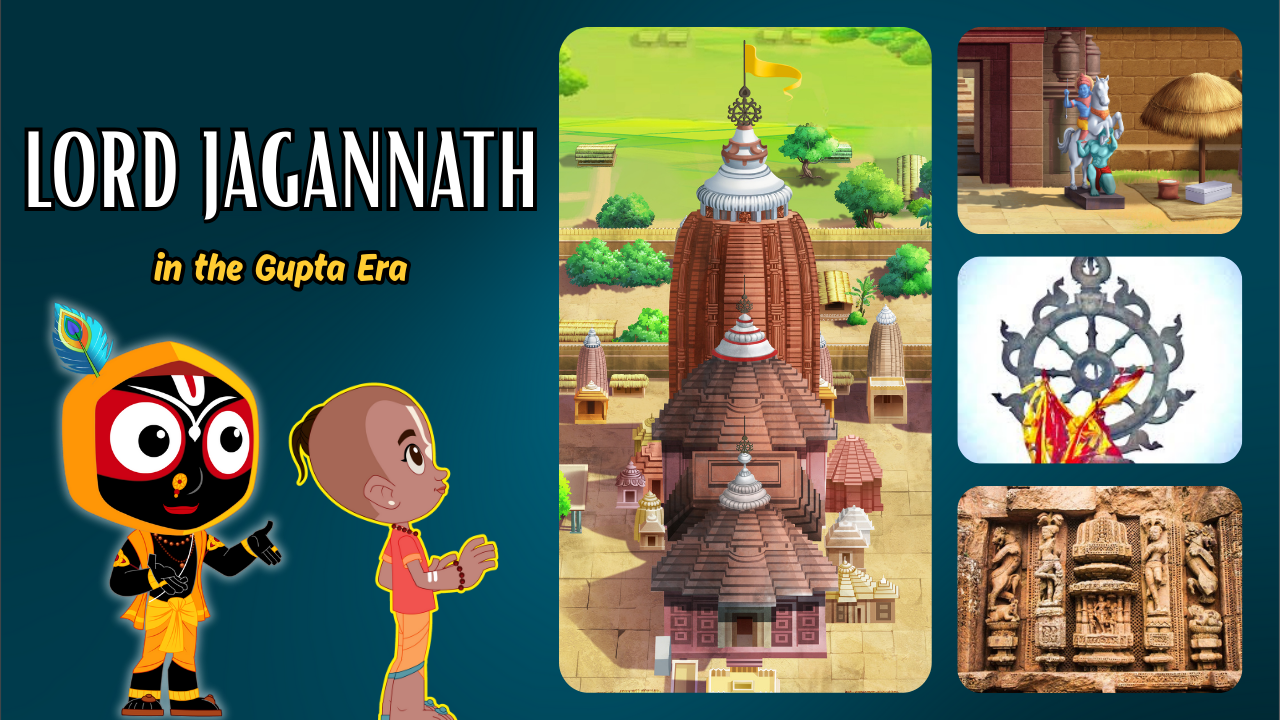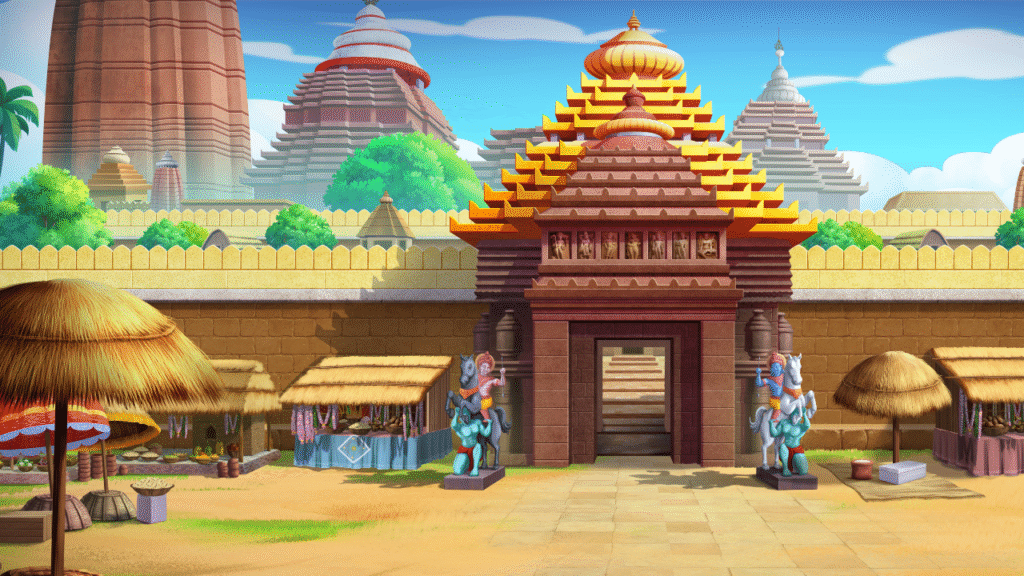
Lord Jagannath in the Gupta Era: Art, Architecture, and Religious Influence
Lord Jagannath in the Gupta Era (4th–6th century CE) is often remembered as the Golden Age of India. This period was marked by great progress in literature, science, art, and religion. For Odisha, it was also a time when the worship of Lord Jagannath gained wider recognition and became deeply connected with the spiritual and cultural life of India.
- The Gupta Empire and Odisha
- Jagannath and Vaishnavism in the Gupta Age
- Gupta Coins and Symbols – Vishnu’s Image
- Gupta Art and Its Influence on Jagannath
- Temple Architecture – Gupta to Odisha
- Literature and Puranic Influence
- Religious Harmony and Jagannath
- Kingship and Jagannath
- Lord Jagannath in the Gupta Era of Lasting Impact
- Conclusion
The Gupta Empire and Odisha
The Guptas extended their influence into eastern India, including parts of Kalinga (modern Odisha). Trade, politics, and culture brought Odisha into closer contact with the Gupta heartland. This exchange allowed Jagannath worship to interact with mainstream Vaishnavism, while still preserving its tribal and regional uniqueness.
Jagannath and Vaishnavism in the Gupta Age
-
The Guptas were devoted followers of Vishnu and Krishna.
-
Jagannath in Odisha began to be more widely understood as a form of Krishna-Vishnu.
-
This gave Jagannath a pan-Indian identity, not just a local one.
-
Worship shifted from only being a tribal and folk practice to becoming a Bhakti-centered tradition, open to everyone.
Gupta Coins and Symbols – Vishnu’s Image
The Guptas issued coins with Vishnu’s symbols, like the chakra (discus) and Garuda (divine eagle). These same symbols later became central to Jagannath tradition. Even today, the Nilachakra (blue wheel) atop the Puri temple represents the cosmic wheel of Vishnu. This continuity shows how Gupta imagery influenced Jagannath’s spiritual identity.
Gupta Art and Its Influence on Jagannath
-
Gupta art was graceful, spiritual, and full of bhakti rasa (feeling of devotion).
-
Temples across India carried sculptures of Krishna-Vishnu, inspiring Odisha’s artisans.
-
While Jagannath’s idol remained wooden and abstract, Gupta art helped enrich the rituals, songs, and symbols around Him.
-
The focus on love and devotion in Gupta art blended beautifully with Jagannath’s tradition of equality and compassion.

Temple Architecture – Gupta to Odisha
The Gupta age gave India some of its earliest stone temples, introducing:
-
Garbhagriha (sanctum) – the sacred space for the deity.
-
Shikhara (tower) – a rising structure symbolizing Mount Meru.
-
Mandapa (pillared hall) – a place for community worship.
These features later shaped the Kalinga style of Odisha temples, influencing structures in Bhubaneswar, Konark, and ultimately the Jagannath Temple at Puri.
Literature and Puranic Influence
During the Gupta era, many Puranas were compiled and spread. Texts like the Vishnu Purana and Bhagavata Purana linked Krishna and Vishnu with cosmic protection. In Odisha, these stories helped integrate Jagannath into the larger Vaishnava fold, making Him not just a local deity, but a universal Lord.
Religious Harmony and Jagannath
The Guptas supported Vaishnavism, but they also respected Shaivism, Shaktism, and Buddhism. Odisha, already a land of diverse traditions, absorbed these influences into Jagannath worship:
-
Buddhist echoes – Jagannath’s form as a compassionate Lord resembles Buddha’s universal appeal.
-
Shaiva-Shakta traditions – Rituals at Puri temple include aspects of Goddess worship and Shaiva practices.
-
This gave Jagannath a multifaceted identity – a God for all people, beyond sects and castes.
Kingship and Jagannath
In Gupta inscriptions, Vishnu was praised as the protector of kings and empires. Odisha, however, developed a unique tradition: the king was only a servant of Jagannath. This tradition survives even today, as the Gajapati Maharaja of Puri performs the ritual of sweeping Jagannath’s chariot during Ratha Yatra, showing humility before the Lord.
Lord Jagannath in the Gupta Era of Lasting Impact
-
Art & Imagery – Vishnu’s symbols like the chakra and Garuda entered Jagannath’s tradition.
-
Architecture – Gupta temple models inspired Odisha’s temple style.
-
Religious Inclusiveness – Jagannath absorbed Buddhist, Shaiva, and Shakta elements.
-
Bhakti Movement – Love, devotion, and equality became the heart of Jagannath worship.
-
Kingship Rituals – The king’s role as a servant of the Lord was firmly established.
Conclusion
The Gupta era was not just India’s golden age – it was also a turning point in Jagannath’s spiritual journey. By blending Gupta art, architecture, and Vaishnava devotion with Odisha’s unique traditions, Lord Jagannath became more than a regional deity. He became the universal Lord of all beings.
Even today, the echoes of the Gupta period live on in the Ratha Yatra, the Nilachakra, and the Puri Jagannath Temple – standing as symbols of unity, devotion, and timeless faith.


Leave a reply here
Your email address will not be published. Required fields are marked *